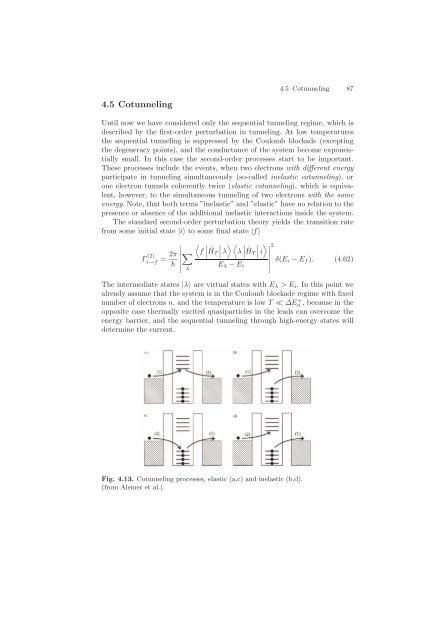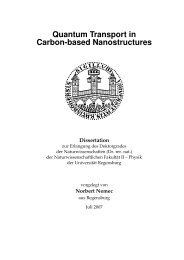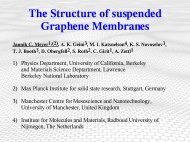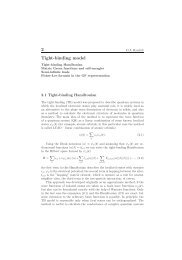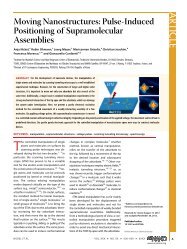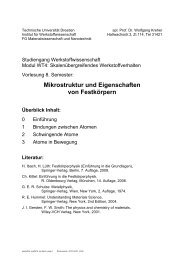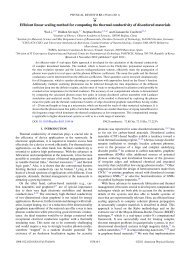4 Coulomb blockade
4 Coulomb blockade
4 Coulomb blockade
You also want an ePaper? Increase the reach of your titles
YUMPU automatically turns print PDFs into web optimized ePapers that Google loves.
4.5 Cotunneling<br />
4.5 Cotunneling 87<br />
Until now we have considered only the sequential tunneling regime, which is<br />
described by the first-order perturbation in tunneling. At low temperatures<br />
the sequential tunneling is suppressed by the <strong>Coulomb</strong> <strong>blockade</strong> (excepting<br />
the degeneracy points), and the conductance of the system become exponentially<br />
small. In this case the second-order processes start to be important.<br />
These processes include the events, when two electrons with different energy<br />
participate in tunneling simultaneously (so-called inelastic cotunneling), or<br />
one electron tunnels coherently twice (elastic cotunneling), which is equivalent,<br />
however, to the simultaneous tunneling of two electrons with the same<br />
energy. Note, that both terms ”inelastic” and ”elastic” have no relation to the<br />
presence or absence of the additional inelastic interactions inside the system.<br />
The standard second-order perturbation theory yields the transition rate<br />
from some initial state |i〉 to some final state |f〉<br />
Γ (2) 2π<br />
i→f =<br />
¯h<br />
<br />
<br />
<br />
f <br />
<br />
<br />
<br />
ˆHT<br />
<br />
<br />
λ λ ˆHT<br />
<br />
<br />
2<br />
i<br />
<br />
<br />
<br />
Eλ − Ei<br />
δ(Ei − Ef ). (4.62)<br />
<br />
λ<br />
Theintermediatestates|λ〉 are virtual states with Eλ >Ei. Inthispointwe<br />
already assume that the system is in the <strong>Coulomb</strong> <strong>blockade</strong> regime with fixed<br />
number of electrons n, and the temperature is low T ≪ ∆E + n , because in the<br />
opposite case thermally excited quasiparticles in the leads can overcome the<br />
energy barrier, and the sequential tunneling through high-energy states will<br />
determine the current.<br />
Fig. 4.13. Cotunneling processes, elastic (a,c) and inelastic (b,d).<br />
(from Aleiner et al.).


